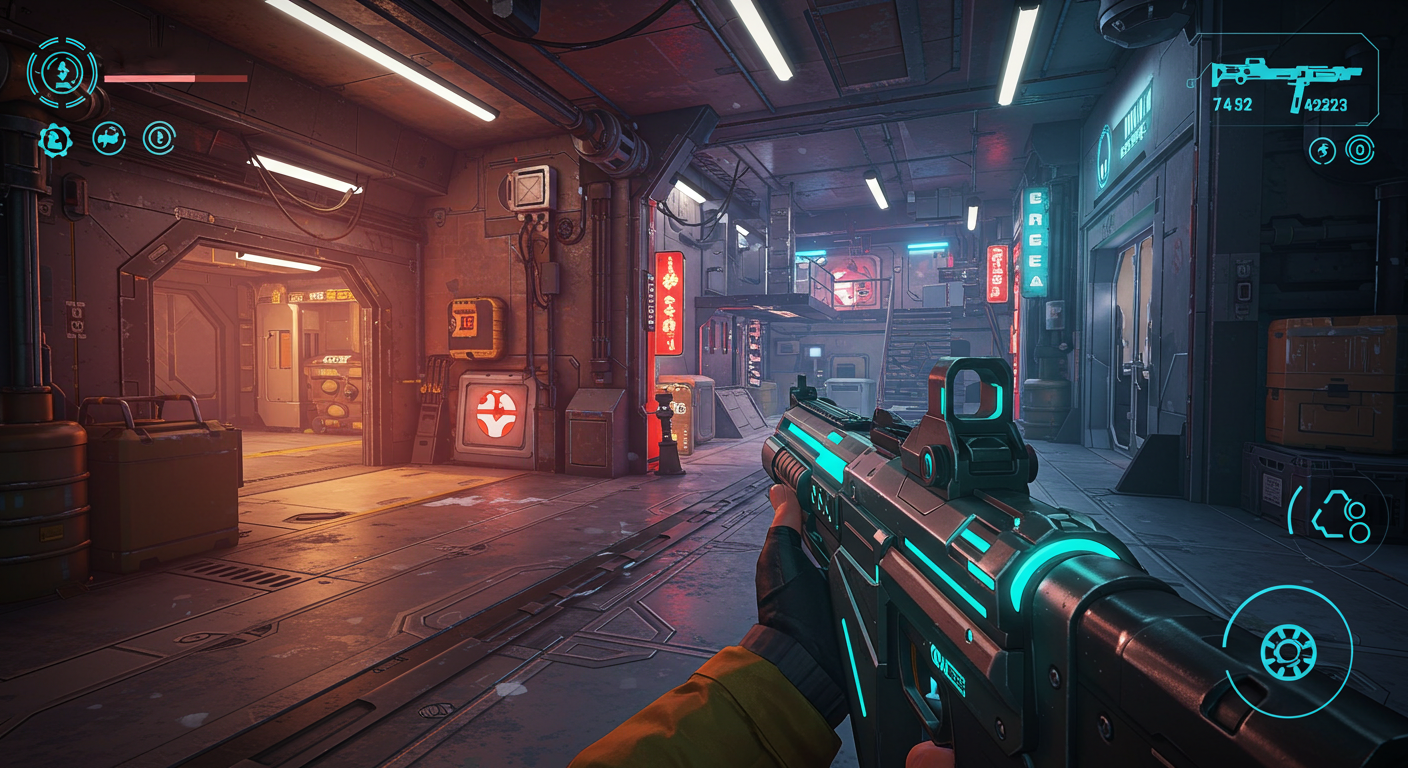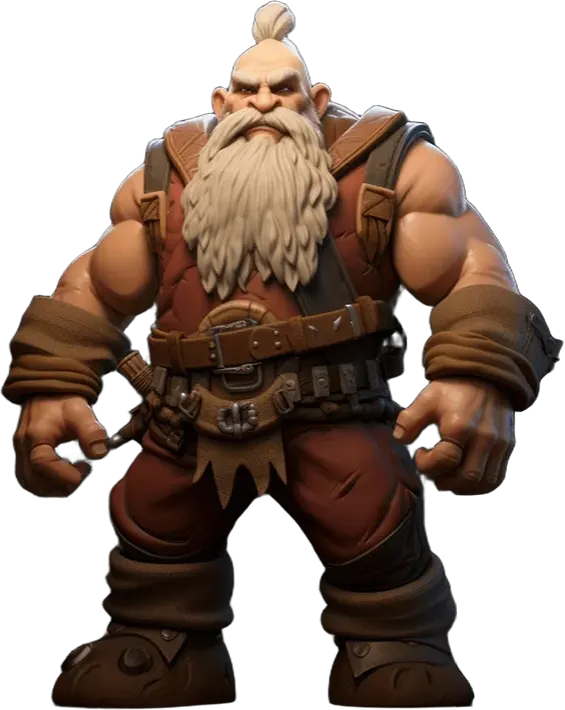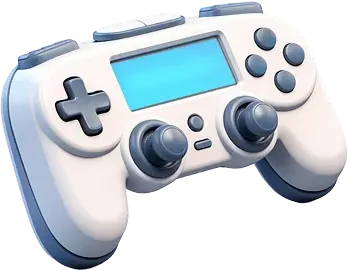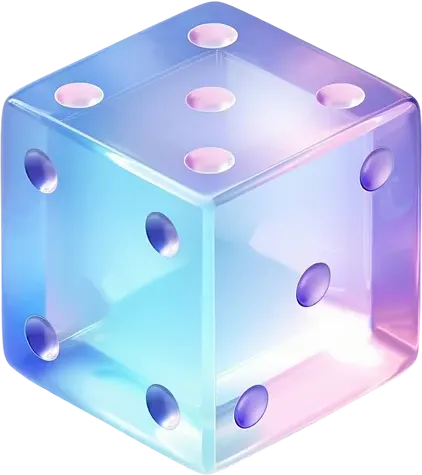
What do Candy Crush and Elden Ring have in common? At first glance, absolutely nothing. One’s about lining up colorful candies on your phone during a coffee break, while the other throws you into a dark fantasy world where even a tree branch can kill you. Yet, here’s the twist: they both went through the same game development process before hitting your screen.
That’s the beauty (and chaos) of game creation. Whether it’s a casual mobile puzzle or a massive open-world adventure, every game starts as a spark of an idea and grows through a structured process.
Of course, no two journeys are identical; some developers speed through, others stumble a thousand times, but the roadmap stays surprisingly consistent.
And here’s a wild fact: the global gaming industry is projected to reach $312 billion by 2027, which means you have a chance to turn your ideas into the next big hit.
In this blog, we’ll walk you through the stages of game development, from concept to launch, so you can stop guessing and start creating the kind of game people can’t put down.
How Does a Game Go from Idea to Reality? 7 Key Stages of Game Development
Every game you play started as just an idea, a spark in someone’s brain. But turning that spark into a full-fledged game? That’s where the magic (and hard work) happens. Let’s break down the 7 stages of game development that guide every game from concept to console.
- Planning
- Pre-production
- Production
- Testing
- Pre-launch
- Launch
- Post-launch
1. Planning: Where Ideas Take Shape
Picture this: you’re chilling at your favorite cafe, doodling in your notebook, sipping on a latte, and bam!—it hits you. “What if I made a game… in a library that literally changes around you?” Congratulations, my friend, you’ve just entered the planning stages of video game development journey.
There are the big questions that have to be answered before you can get too deep in coding, animating, or designing the foundation of your game, and they are:
- Genre: Do you want it to be survival horror, RPG, puzzle, or a unique hybrid?
- Perspective: 2D, 3D, or something in-between? This choice will shape everything from art to gameplay.
- Art style: Pixel, hand-drawn, hyper-realistic, what vibe fits your vision?
- Game mechanics: How will your game be interesting and entertaining to play?
- Protagonist & antagonist: Who’s leading the adventure, and who, or what, is standing in their way?
- Game engine: Which tool will best bring your idea to life?
By now, your idea looks exciting on paper, but can it actually hold up in the real world? That’s where the proof of concept comes in, as part of the planning phase. Instead of building everything at once, you zoom in on the essentials:
| What to Validate | Why It Matters in the Game Development Process |
| Budget & Funding | Can you realistically afford this? Explore crowdfunding, publishers, or self-funding. |
| Timeline | Set expectations early, are we talking 6 months or 3 years? |
| Skills & Team | Solo project or do you need extra hands (artists, programmers, sound designers)? |
| Revenue Model | Free-to-play, one-time purchase, or something in between? |
| Platform Fit | Is this game better suited for PC, console, or mobile? |
Only 1 in 10 game concepts ever reaches players.
Let RevolGames helps you navigate every stage, from planning to post-launch success.
2. Pre-Production: Turning Concepts Into a Blueprint
If dreaming big is planning, preproduction is where you begin to create the road to bring those dreams to life. This game development stage is where you take your rough ideas and work them into a unified concept, thus ensuring that your plot, mechanics, storyboards, art, and technology are all in synergy before you start the final production.
What Happens in Pre-Production?
Here’s a breakdown of the core areas and their focus:
| Area | What Happens Here |
| Art Direction | Define the visual style, tone, and color palette so the game has a consistent look. |
| Game Design | Finalize core mechanics, physics, and player interactions through prototypes. |
| Technical Planning | Writers outline the story, characters, and world-building that influence gameplay and art. |
| Narrative | Free-to-play, one-time purchase, or something in between? |
| Project Management | Leads set timelines, milestones, and responsibilities for each team. |
3. Production: Where Your Game Comes to Life
Production is one of the main and longest of all 7 stages of game development, where your game really comes to life, and it’s often the longest and most resource-intensive part of development. This is where the bulk of time, money, and creative energy is invested.
What Happens During Production
Here’s a closer look at the key elements that come together during this stage:
| Area | What Happens | Why It Matters |
| World & Level Design | Developers and designers build interactive environments that align with gameplay and story. | A well-crafted world immerses players and enhances gameplay. |
| Character & NPC Modeling | 3D or 2D models are designed, textured, rigged, and animated. | Gives life and personality to the characters players control and meet. |
| Voice Acting | Scripts are recorded, edited, and fine-tuned to capture emotion and tone. | Adds depth and believability to dialogue and narrative. |
| Sound Design & Music | Soundtracks, sound effects, and ambient noises are created and integrated. | Improves player immersion and reinforces game atmosphere. |
| Script & Copywriting | Writers refine dialogue, item descriptions, lore, and in-game text. | Ensures consistency and supports the story and gameplay experience. |
This game development stage is where the fun truly begins, but your game also experiences its initial real tests in production. It is not about making everything perfect the first time, but rather about making a game that is real and matches the vision as outlined in the planning and pre-production stage.
4. Testing: Polishing Every Pixel
Testing is where your game really shows its colors. It’s not showy, but every fixed bug, every balanced mechanic, and every moment of confirmed enjoyment guarantees gamers will have a smooth, fascinating experience.
Here’s What You Need to Test
| Area | Focus |
| Environment & Collision | Ensure players cannot walk through walls, fall through floors, or access unintended areas. |
| Performance & Rendering | Check frame rates, object rendering, and graphical stability. |
| Exploits & Mechanics | Confirm players cannot abuse game mechanics for unfair advantages. |
| Softlocks | Make sure players cannot get stuck in the game with no way forward. |
| Difficulty Balance | Adjust gameplay to be challenging yet fair and engaging. |
| Scripting & Dialogue | Verify scripts, text, and voice lines are correct and polished. |
| Fun Factor | Ensure mechanics, puzzles, and story are engaging and enjoyable. |
5. Pre-Launch: Getting Ready to Share Your Game
The pre-launch phase is where all the effort of the game development process begins to meet the external world. At this point, your game should have a stable version, one that is good enough to be presented to players, testers, and the press.
-
Preparing Your Game for Public Eyes
Relying solely on internal testing leaves gaps; feedback from actual players helps identify problems often missed during development. Early Access or closed beta tests are a great chance to test the balance of the gameplay, its difficulty, and overall enjoyment.
-
Building Hype and Community
The pre-launch is also concerned with marketing. Buzz can be generated through teasers, trailers, social media campaigns, and demos. You must also be engaged in your community. Listening to reviews, fixing problems, and providing a behind-the-scenes look and feel builds trust and hype players before your game is released.
6. Launch: Bringing Your Game to Players
The launch stage is where your game comes out of the stages of game development and actually gets to the players. However, it is not only about hitting the release button but also about having a well-polished, stable, and enjoyable game when first played.
This step can be either a small local rollout to gauge the market or a complete worldwide rollout. The building blocks for the audience will be the App Store, Google Play, or Steam.
- Ensure that your game is within platform requirements and is distinctive, with good graphics, trailers, and descriptions.
- Create buzz via social media, influencers, and gaming press in order to get to the correct players.
- Address early issues quickly to show players you’re committed to a smooth experience.
Want to see your game idea in players’ hands this year? Let’s accelerate your game’s journey from concept to reality.
Start Developing Now!
7. Post-Launch: The Journey Continues
The big day has arrived, your game is out!. Players are visiting your worlds, experimenting with your game mechanics, and telling their stories online. However, the stages of game development do not end with the launch; post-launch is when your game is improved and firmly rooted in the hearts of players.
-
Squashing Bugs and Fine-Tuning
Despite precise testing, certain bugs will not be detected until the real world. Begin with bugs that hinder gameplay or stability, then transition to small glitches and cosmetic patches. Frequent updates show quality dedication and are a reason that keeps the players loyal to your brand.
-
Expanding Your Game with DLC
Material that did not fit in your publication can finally see the light of day. Paid DLC can introduce new missions, maps, or characters, and earn you money. Free updates, on the other hand, are a source of happiness to your community and make them loyal.
-
Engaging Your Community
The relationship between the players can be enhanced best during the post-launch phase. Share updates, comment on reviews, feature community creations, and tease what is ahead. A vital, passionate community will make your game successful and promote retention.
What Are the Must-Have Tools for Every Stage of Game Development?
The right tools can make the process of making a game a lot easier. When comparing mobile games vs console games, the choice of tools often depends on the platform you’re targeting. The following is a list of the key tools used in various aspects of the game development process:
| Category | Tools / Software | Purpose |
| Game Engine | Unity, Unreal Engine | Unity excels at 2D, mobile, and VR/AR projects; Unreal is ideal for high-end 3D visuals and advanced physics |
| Design & Documentation | Figma, Miro, Notion | Create wireframes, concept art, and full Game Design Documents |
| Project Management | JIRA, Trello, Asana | Track tasks, manage sprints, and set project priorities |
| Version Control | Git, Perforce | Keep code organized, secure, and collaborative across development teams |
| Art & Asset Creation | Blender, Maya, Photoshop, Substance Painter | Produce 2D and 3D assets, textures, and animations |
| Audio & Sound | FMOD, Audacity, Reaper | Design music, sound effects, and record or edit voiceovers |
Build Your Next Game with RevolGames
When all this talk about the game development process has given your imagination a good workout, then why not make it happen with RevolGames?
We are the experts in developing 2D and 3D games that can be enjoyed and are unique in the current competitive gaming environment. Our team is creative enough to build your vision, and we have the technical skills to make it happen, whether that vision is a pixel-art indie adventure, a high-fidelity 3D world, or both.
As a leading game development company, RevolGames has worked with both indie developers and startups, as well as established ones, in creating memorable gaming experiences. We have a wide range of portfolios, including fast-paced action games and story-driven RPGs.
With RevolGames, your project’s progress is always visible. We rely on industry-standard tools to ensure your video game development timelines are clear and development stays on track.
And here’s what sets us apart:
- End-to-end services: from ideation and game design process to coding, testing, and launch.
- Cross-platform expertise: PC, mobile, and console-ready games.
- 2D & 3D mastery: from pixel-perfect worlds to realistic 3D environments.
- Blockchain & NFT integration: tokenized assets, digital ownership, and secure play-to-earn mechanics.
- Collaborative approach: your vision guides every stage of game development.
Whether you already have a game idea or are exploring what type of game to make, check out the blog: 50 creative concepts for startups and Entrepreneurs.
RevolGames has the talent and a full-fledged team of game designers, animators, developers, and blockchain experts ready to bring it to life. Don’t let your game idea stay just an idea.
Share your concept with RevolGames
We’ll turn it into a polished, fully playable game that captivates players!
Frequently Asked Questions
The 7 stages of game development are planning, pre-production, production, testing, pre-launch, launch, and post-launch, and each deals with different things like concept design, asset creation, quality assurance, and player interaction.
The Video game development timeline depends on the type of game. A simple 2D game may take 6–12 months, while a complex 3D or blockchain game can take 2–3 years. RevolGames provides expert project planning to manage timelines while not compromising on quality.
Yes! Being a leading game development company, RevolGames is a blockchain gaming and NFT implementation specialist, helping you create immersive gaming experiences as well as digital ownership.
All steps are essential, but pre-production and planning are most important; those dictate your game idea, mechanics, and roadmap. Early decisions reduce costly mistakes later on.
The cost of developing a mobile game varies extensively depending on its type and complexity. Large-scale games like Clash of Clans or Last Day on Earth would typically cost $50,000 to $100,000, while AAA titles like PUBG or GTA would range from $100,000 to $1,000,000.
Less complex games, nonetheless, are much cheaper: basic 2D games can start from as little as $5,000 to $20,000, and 3D games range from $20,000 to $50,000, depending on graphics, features, and game complexity.
Use our cost calculator to get a precise estimate, or share your project details with our team to receive a custom quote
Related Posts
Roblox Game Development on Mobile [2025 Guide]
- Posted by admin on November 20, 2025
- Category : Game Development
How do you make a Roblox game on mobile? Find the easy workarounds and steps of Roblox game development on…
How Much Does It Cost to Hire a Game Developer?
- Posted by admin on November 20, 2025
- Category : Game Development
Hire game developers with Revol Games. We offer flexible hiring models and expert talent for mobile, PC, console, and VR/AR…
How to Create Your Own Mobile Game App from Scratch
- Posted by admin on November 18, 2025
- Category : Game Development
Learn how to make a game app from scratch with a step-by-step guide, game types, tools, and expert insights to…




